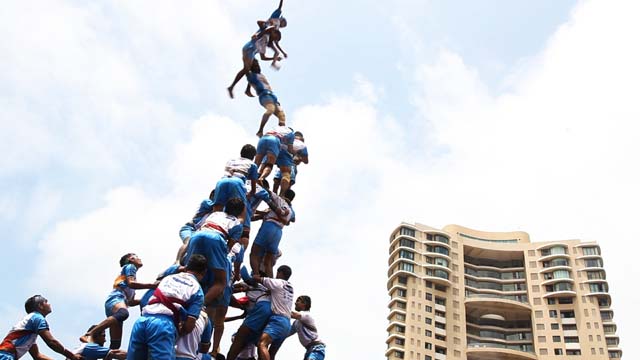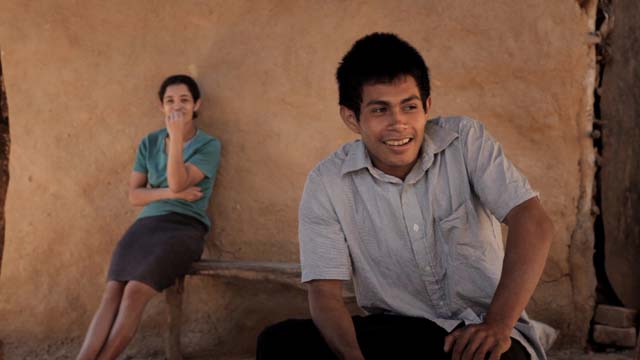
At Margaret Mead Film Festival, Worlds Collide…
[dropcap]I[/dropcap]magine circling the world while sitting perfectly still, almost meditatively, in a darkened cinema hall. You witness real lives, real people in places as far apart as Bahia, Brazil, a Navajo reservation in New Mexico, and the isolated Arnhem Land in Australia. You see the differences between varied people but also the commonalities: people face love and loss, and try to make sense of being human, of grief, of injustice.
All these triumphs and tragedies of human existence are captured on camera by diverse filmmakers in films you may never get to see. This was after all at the Margaret Mead Film Festival at the American Museum of Natural History in New York – it is the oldest and best known festival for documentaries from around the world.
“These movies are NOT coming to a theater near you; they are limited distribution, truly independent films that come from around the globe,” says Bella Desai, Director of Public Programs and Exhibition Education. “We also strive to bring in as many filmmakers and film subjects as we can, so we can delve into the story with our audiences. Because of the Museum context, the Mead is a place where we really encourage audiences to connect tangible and intangible culture, and to highlight the relationship between timeless artifacts and contemporary storytelling.”
Bad Weather
[dropcap]I[/dropcap]ndeed, it is all about storytelling for each one of us carries our past, our stories with us and the theme this year was ‘Whose Story is it?’ This question was asked not only of the filmmakers but of the audience too in an interactive story lounge and while some of the responses were stoic or factual, others were witty and even philosophical.
For many indigenous filmmakers, cinema is a balancing act, telling a local story to a global audience. As Jennifer Deger, director of Manapanmirr, in Christmas Spirit, puts it, “It’s only our story if we tell it our way. That means refusing to explain everything away in other people’s terms, risking misunderstanding for truths that matter.”
And so it was that documentary lovers, filmmakers, academics as well as ordinary people, people whose stories were being told, all come together, a community of story-tellers and story-listeners. Over 29 documentaries showed, many of them world premieres or New York premieres. Many of the films were sold out, including The Other Half of Tomorrow, The Human Tower, Himself He Cooks, and Life Without Words.
The Other Half of Tomorrow
[dropcap]T[/dropcap]he Other Half of Tomorrow, directed by Sadia Shepard and Samina Quraeshi brought alive the story of women in contemporary Pakistan through seven linked stories; The Human Tower, directed by Ram Devineni and Cano Rojas, showcased the perseverance and teamwork behind the building of these towers in three different countries – India, Chile and Spain.

The langar tradition is highlighted in Himself He Cooks, a remarkable film without music or dialogue by Valerie Berteau, shot in the Golden Temple, a beautiful orchestration of thousands of hands and feet, the magnified clatter of thalis and katoris, the dance of rotis on the heated tawa as a sea of humanity – hundreds of thousands – are served food.
People whose stories are hardly ever told found audiences and a voice through many of these films, from Nagaland, the Last of the Headhunters to The Light in her Eyes, a film about a Qur’an School for girls in Damascus.
Viewers also got to see Jai Bhim Comrade, Anand Patwardhan’s powerful 182 minute documentary which was shot over 14 years. A searing testimony to the injustices meted out to the Dalits in India, the film cannot fail to move people and to question the ugly power of class and caste. The music – rousing ballads, sad poetry and bawdy songs – is almost a character in the film and a bulwark against oppression.
Ten of the filmmakers were contenders for the Margaret Mead Filmmaker Award which honors those filmmakers whose work echoes the spirit and innovation of the noted anthropologist. The winner was Adam Isenberg whose film A Life Without Words is a haunting tale of two siblings who are born deaf in Nicaragua and live in a circumscribed world of a few miles, with no sound or signed language.

[dropcap]W[/dropcap]hat was unique about this festival was the sheer merging of diverse people, a gigantic churning of people from all parts of the world, with scores of languages on their tongues and memories of many places. That, of course, is a very New York thing, but here it was even more pronounced: beautiful young people, the elderly, dancers, academics, the disabled in wheelchairs with even a seeing-eye dog in the audience. He squatted silently on the floor throughout the film with his mistress.
“Each year we see a new influx of audiences who are connected to the particular communities represented in the films—since New York has communities from around the world, we always draw local audiences with a tie to a particular place or who are interested in a particular issue,” says Desai.
Asked for the most telling incident at the festival, she mentions the audience participation after the film Wheat and Tares, which is a sensitive portrait of members of a religious sect who believed the world was going to end on 5/21/11. “Instead of portraying these people as ‘crazy’, the film shows them as real, relatable people and forces viewers to question the nature of belief and how we are so sure of what we all know,” she says.
Indeed, she points out that several of these members of the sect actually attended the screening, and the audience was able to engage in a conversation with the subjects about their experience and how they have coped. Desai adds, ” It was an emotional conversation that really opened minds, eyes, and hearts.”
Jai Bhim Comrade
[dropcap]W[/dropcap]hich movies would Margaret Mead have liked? Desai, who has been immersed in the programming of the festival, says, ” Mead would have loved all of the films, because they were all chosen in her spirit of pushing the limits of visual anthropology and exploring what it means to “document” culture. Perhaps she would have had a special place for Maori Boy Genius as it focused on a region she loved and even has a scene that takes place in her gallery at the Museum (the Margaret Mead Hall of Pacific Peoples).”
Along with the films were interactive games, dialogues on provocative issues, and even a few lively parties, once again spotlighting the universal pull of music. Crowds danced with abandon at the Bhangra Dance Party with DJ Rekha, and on the closing night packed the hall for a Brazilian Dance Party with Maracutu NY and Nation Beat. First they merely listened but soon the audience was drifting like sleepwalkers on to the dance floor – American, African, Hispanic and every other race – moving wildly to the beat of the hypnotic drums.
In the course of a few hours, I made friends with unknown people whose original homes were in China, Algiers, Mexico and Pakistan. Each one of them had a past, a history, and in the hands of the right filmmaker, each could become a powerful story. As Giovanni Giommi, director of Bad Weather, said: “I think that our mission as filmmakers is exactly this: look around, choose a story (or be chosen) and tell it honestly before it disappears and is erased from the memory of the world.”
The Festival with a Past
[dropcap]T[/dropcap]ackling diverse and challenging cultural and social issues, the Mead Festival has introduced New York audiences to such acclaimed films as the Oscar-winning documentary The Blood of Yingzhou District (2006), Oscar-winning animated short The Moon and the Son: An Imagined Conversation (2005), The Future of Food (2004), Power Trip (2003), and Spellbound (2002). The Mead Festival has a distinguished history of “firsts,” including being the first venue to screen the now-classic documentary Paris Is Burning (1990) about the urban transgender community.
(Source: AMNH)
(This article was first published in The Hindu )
